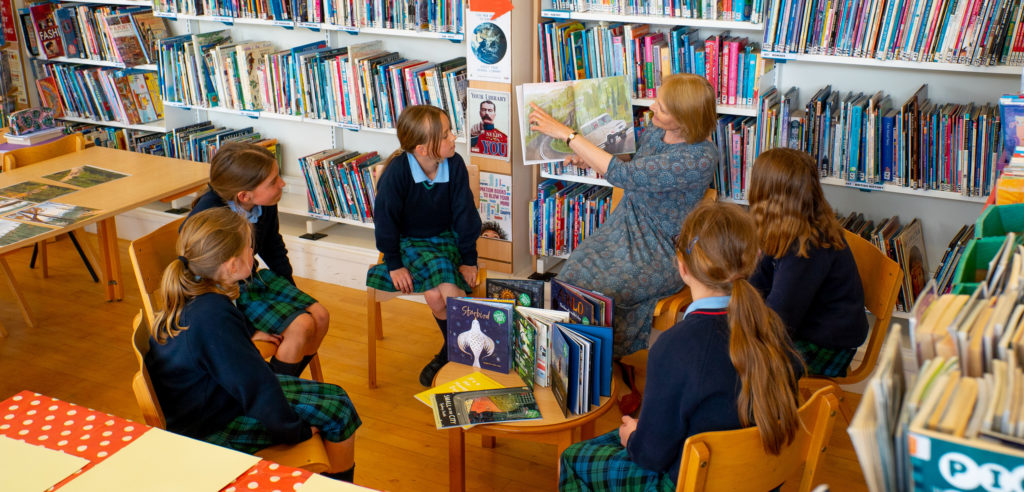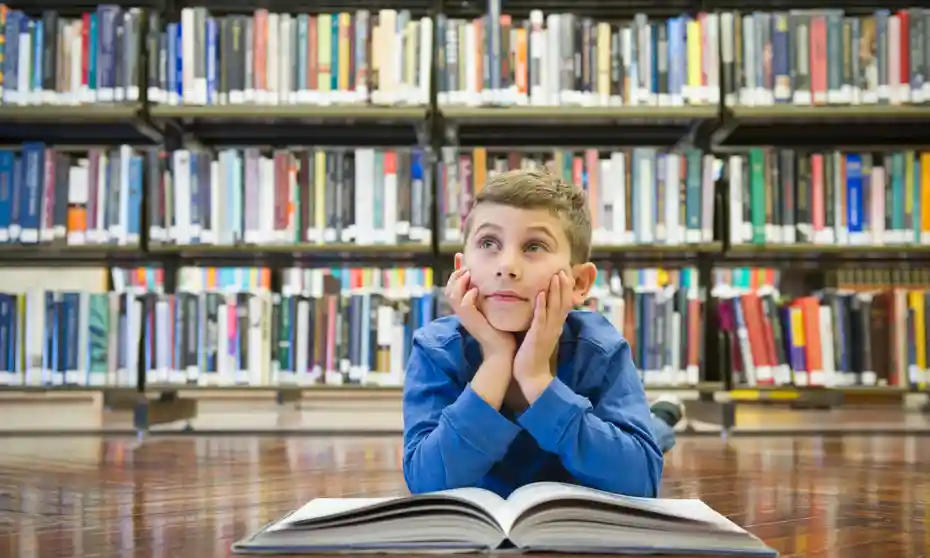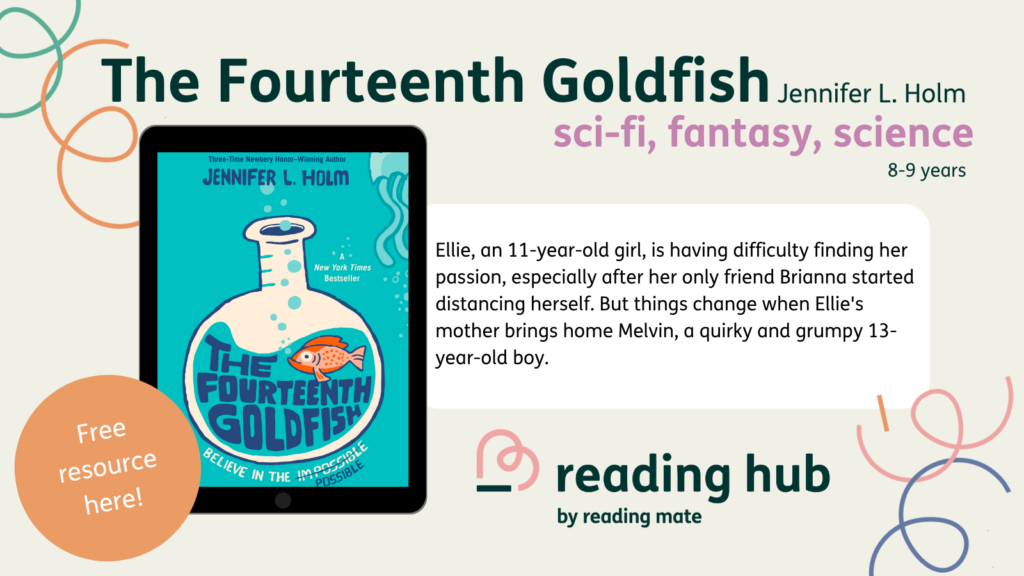Think about the last time you went to your local library. What did you do? Most likely, you picked up a few books and maybe even browsed the internet. But what if we told you that school libraries are so much more than just places where you can borrow books? Many libraries are now offering incredible programs and services that are inspiring the next generation of primary readers! Libraries are also the only place that one in eleven children in the UK can go to get books, as well as being a safe place for their parents.
Looking for lesson ideas and resources to help in the classroom? Check out this series of activities for The Fourteenth Goldfish by Jennifer L. Holm.
What are the functions of a school library in an era of austerity and a “digital divide”? Recent statistics show another year of public library cuts is on the cards. But what does this mean for our disadvantaged children and communities?
Why is the school library more essential than ever before?
It’s no secret that the last couple of years has been extremely disruptive and harmful to our children. To avoid a ‘pandemic generation,’ we must act now to repair lost learning and safeguard their prospects.
Now children are back in school, we mustn’t overlook the importance of the modest school library in closing the learning gap, reigniting children’s interest in learning, and, as importantly, alleviating teachers’ and school employees’ strain from heavy workloads.
“The role of a school library has never been more needed.”
– School Libraries Association

Currently, there’s no government requirement for schools to have a library. Yet, 1 in 11 children is growing up in the UK without books in the home. For these children, school is the only opportunity they will have to discover the magic of reading. Moreover, 25% of disadvantaged primary schools in England say they do not have a library. This is a devastating statistic for those communities as children that are eligible for FSM were more likely than their peers who are not eligible to use their school library daily.
What role does the humble library play in Primary Schools?
School libraries have a vital role to play, throughout the learner journey from 3 to 18, in supporting literacy, health and wellbeing, and improving attainment.
In the early years, school libraries provide a welcoming and stimulating environment where children can explore books and other resources. They also offer opportunities for parents to get involved in their child’s learning. Research shows that parental engagement is key to improving learner attainment. Some of the ways libraries offer more than just a space to read are:
1. Inspiring a love of learning and reading
School libraries are the perfect place to foster a love of learning and reading. Studies have shown that children who visit their school library regularly are more likely to develop the habit of reading than those who don’t. School librarians are experts in creating a love of reading in learners and can recommend books based on each child’s interests.
Libraries are teaming with phenomenal resources and people that may transport us from one world to another by allowing us to immerse ourselves in the lives of wonderful characters or learn about other cultures across the globe. We need to ignite children’s interest in the world and pique their imaginations, and a library is perhaps the ideal tool for doing so.
2. Digital literacy and critical thinking skills
More than ever, in the era of ‘fake news’ and ‘deep fakes,’ school libraries are more essential, yet one-in-eight schools lack one.

Libraries are more than just about books; however, they serve as essential learning centres, giving young people the necessary skills to thrive in today’s increasingly digital world. All learners should be taught how to evaluate information, research content, and form their interpretations of reality, as well as how to locate trustworthy and authentic information from a variety of sources.
3. Reducing teacher workload
Teachers and school staff are under constant pressure to support their parents, pupils and communities.
In today’s fast-paced world, school librarians are an underutilised yet crucial tool in relieving teachers of their immense workloads. Librarians may provide related research or reading activities once informed on the subject, freeing up time for the teacher to plan or grade. Librarians can also collaborate with instructors to better understand each learner.
4. Love of reading
Primary school libraries should not only inspire and encourage learners with reading but also help embed a culture of reading for pleasure within the school.
The links between reading for pleasure and academic success are well-established, implying a beneficial link between reading frequency, reading enjoyment, and achievement (Clark, 2019).
According to research, learners who like to read do better in school. Children who regularly read, for example, made greater progress in maths, vocabulary, and spelling between the ages of 10 and 16 than those that rarely read (Sullivan & Brown, 2013).
All Party Parliamentary Group report, The Beating Heart of the School, concluded that “Access to library space and School Library Services will have an impact on attainment at a pivotal point in a child’s educational life. Studies have shown that children who read for pleasure from a young age are much more likely to do well throughout their academic life.”
5. Mental wellbeing
Improving access to books and increasing children’s literacy skills have improved mental well-being. However, providing learners with a physical library space can also promote mindfulness and an oasis of calm.
The pandemic highlighted how libraries continue to play a significant role in closing the disadvantage attainment gap. The benefits that libraries provide in terms of children from disadvantaged families gaining access to books they would otherwise not have access to, will be critical in closing the disadvantage attainment gap.
How do you inspire a culture of reading in your school library?
First and foremost, it’s vital to make your library a welcoming space.
Surrounding books with colourful reading cushions and beanbags that children can relax into while they read. Add rugs or carpets so the area is more inviting for younger learners who will be less likely to sit still on hard floors or unwelcoming furniture.
The way you build your library space is also vital:
- face books forward
- don’t overfill the shelves
- themed displays by authors and genres rather than abilities/Key Stages
- ensure it is multi-functional (break out areas and quiet reading/working areas)
- plenty of non-fiction books for exploring
- engaging interactive displays
- use learner helpers
- ‘shelfie’ recommendations from other learners on books
- out with the old and in with the new (make sure every book is one that learners will want to read)
- invite clubs to use the space for meetings
- offer themed events
- create a ‘book in every bag’ where all learners have a good book to read at home.
Having a well-stocked, bright, and exciting library with an abundance of books on offer will undoubtedly improve the reading culture within your school. But it’s not just about having books to read – librarians are essential in promoting and developing a love of reading. With their wealth of knowledge and passion for reading, they can help to ignite a lifelong love of reading within your learners.

Getting parents involved is also essential to inspiring a culture of reading. Schools can invite parents into the library to tell them all about their work and show off the amazing resources available for learners.
Reading for pleasure and having a well-resourced and functioning library are synonymous. More importantly, the success and well-being of all learners (especially the most vulnerable) rely on shelves to be well-stocked and for a quiet place to learn and explore. Books are a huge expense for schools, but you can’t put a price on improving the prospects of every child, can you?
Resources:
Clark, M., B. (2019). Can reading for pleasure in primary school improve attainment? A review of the evidence and policy context. Reading for Pleasure, London: National Literacy Trust. Retrieved from here.
Sullivan, N., & Brown, S.E. (2013). The Effect of Home


